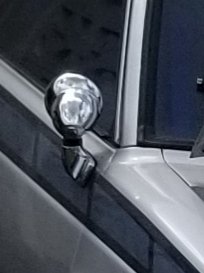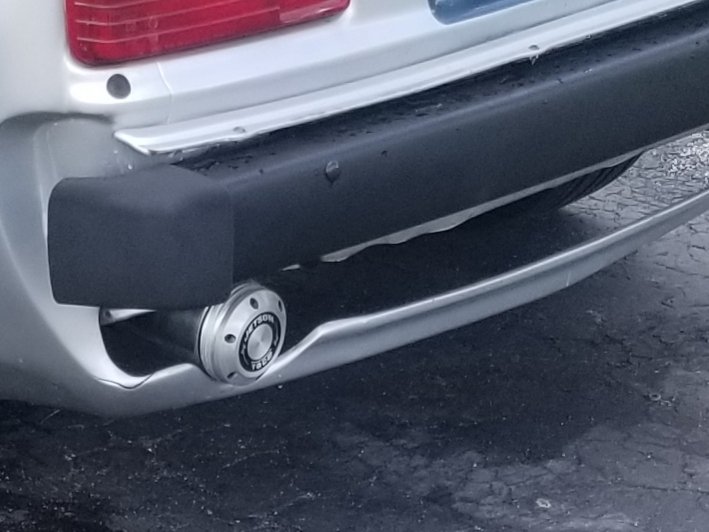

ZEROPILOT
-
Posts
25 -
Joined
-
Last visited
Posts posted by ZEROPILOT
-
-
On 25/11/2018 at 20:11, kws said:
It's mentioned in the first post the check valve is in place and new. Still worth testing it's working properly or swapping out.
OP, have you tested the booster with a vacuum pump to check it can hold a solid vacuum (not just a "by ear" or "feel" test)?
Yes.
One of the first things I did was test the vacuum to make sure it had what the manual says was the minimum. It had more than that.
-
On 23/11/2018 at 02:05, Muncie said:
Does your brake vacuum line have a check valve in it? Might be in backwards or just jammed shut.
Yep. Two of them. Like original.
Even a week later, theres still vacuum if I pull the line off
-
3 hours ago, mjrstar said:
I had a seized proportioning valve on my kp years ago. I would crack one bleed nipple with the pedal hard down and see if it makes the pedal sink.
Thank you for that.
I've got the whole thing taken apart and I'm blowing compresses air through.
I just found a blockage in the left rear from the proportioning valve. But now there is flow. A chunk of what I think is solids from some 35 year old brake fluid came out. And now air can flow both ways.
The 4AGE makes access to the proportioning valve very difficult because the intake manifold sits right up next to it. So removal might be needed to remove the valve for cleaning.
The new booster and another master have now been installed. So, soon I can check the action.
And YES I know that that is a "wonky" vacuum hose.
I'll use a correct but ugly one for testing that is less prone to collapsing.
-
 1
1
-
-
I got a spare booster, master, lines and junction blocks for parts today. These parts are very hard to find. But at least I have a few spare parts if I find a clogged line or something rusted closed.
Its night time here in the east coast of the USA.
I'll get on it in the morning and report back.
Thanks
-
2 minutes ago, tortron said:
How old are your rubber lines? They can swell up on the inside when old
I just swapped them all out last month. Both fronts and the one in the rear.
-
15 minutes ago, Adoom said:
It's okay, you can say "4AGE" in here, it's a safe place. 4 cams! Where did you fit those?
I did say 4 cam. Didn't I? Sorry.
It's a drivetrain yanked out of an '88 SR-5 COROLLA. AE86.
Rebuilt and mostly stock.
Rear end from a Celica (U.S. Starlets had no limited slip diff)
So it had about 60 hp in 1981 and now its pushing maybe 115-120.
It's pretty fun! At least it would be if the brakes actually worked.
This is one of a few vehicles. So it wont get much use anyway. But at this rate. I'm afraid to use it at all.
-
22 hours ago, tortron said:
You probably need to adjust the master cylinder pushrod. I'll bet there's no free play in it.

*
When there's no free play the piston can't fully return and let the fluid flow back into the Res.
Resulting in a very hard pedal and sometimes locked brakes
This was one of my initial thoughts. I adjust the pedal. Adjusted the booster pushrod and at one point even made a shim to slip between the master and booster.
None of it made a bit of difference except pedal height.
-
 1
1
-
-
22 hours ago, Adoom said:
If there was not much flow when bleeding the front. I would start at the master cylinder, remove the brake line, for the front system, from the master cylinder and pump the pedal, you should get a lot of fluid. If you do, reattach the line the line to the master cylinder, and disconnect the other end of it from the "splitter", pump the pedal. If you get lots of fluid, move to the next join and so on.
I must say that that makes a great deal of sense.
Thanks.
-
22 hours ago, yetchh said:
I had an issue like that when I bled the crown brakes a while back, no idea what it was but blew air through the system backwards and it fixed the problem..
That's what I'll try first. If just because it sounds like the easiest thing to do with the master and booster off.
I'll get some clean rags ready and see what kind of crap comes out of there.
-
Thanks
I have the master and booster both out of the car.
Tomorrow I'll get the front end up and pull the wheels off to blow compressed air into each line.
There's not much room under the hood with the master and booster installed since it now has a later model 16 valve 4 cam motor in there.
I'll report back what I find
-
I bought my KP61 after it had sat unused for over 8 years. I replaced the fuel system. Engine and transmission and bled the brakes. But the pedal was rock hard and had little stopping power. "No problem" I thought. And I replaced the brake booster, master, all flexible lines, the calipers, rotors, drums and rear wheel cylinders as well as shoes and pads.
Yep. Same crap!!
Hard pedal and almost no brakes. Just like before I did ANYTHING. The brake booster holds vacuum for days and the vacuum is very strong. The vacuum line is an actual vacuum line and the check valves are new.
My first thought was that the new booster is also no good. But I noticed when I bled the system that the rear brakes bled easily and quickly. But the front brakes required more work. With less flow. I didn't think much about it at the time. But do you think I could have a blocked steel line? I've never heard of that before. And would a blockage or partial blockage to either front wheel after the "splitter" make for a hard pedal? Or would it be more likely in the line from the master before the splitter?
Is this something anyone has encountered before?
This is a U.S. spec 1981 Toyota KP61 Starlet RWD. With stock brakes. Double master. Separate front and rear reservoirs. I'm not yet familiar with all of the lines or where exactly they go. Or if a blocked or partially blocked line would cause a hard pedal.
I cant really drive because I can barely stop.
-
I tried that at one point.
I may go back that route. The thing is I have the ultra rare Japanese market brackets. I'm just hoping to eventually find the correct bumper.
The one in the photo is a chopped up KE70 Carolla unit.
-
The front bumper is a JDM unit I found in Malaysia.
The back bumper is one I made to look like a JDM. I haven't been able to find one.
This is the HORRIBLE U.S.A. bumper.
The USA had a mandated 5 mph crash rating for bumpers.
The "wide body" kit is actually Mitsubishi Starion fenders grafted on to the Starlet sheet metal.
The wheels are 13" American racing with 225/50/13 Vitour tires.
The interior is blue and black with 4 point belts and seat bar. Removable steering wheel.
The wing is from T3 and it now sports a SHADOW rear window louver.
-
 1
1
-
-
Hello.
I'm Ed (ZEROPOLOT) From south Florida U,S.A.
I own a 1981 Toyota Starlet KP61.
I'm looking forward to speaking to other folks with unusual cars. And because I'm in America, most of your cars would be considered unusual.

It is powered by a big port 4age. So it has double the horses of the stock engine. And has a built T50 5 speed, a limited slip diff and coilover rear suspension.
I only had a few photos that were allowed on this forum due to size.
-
 9
9
-











Rock hard brake pedal issue help
in Tech Talk
Posted
The car is still in the air. Wheels off.
I've replaced my ceramic pads with organics. Ceramics being super hard.
And replaced my rear shoes again. They got soaked with brake fluid while I was blowing out and flushing, bleeding the system.
I had my brother help me to "old school" two man bleed the system. Each bleeder when opened made the pedal drop to the floor. Now there is once again good pedal feel.
I'll put it back on the road soon and see if it's any different.